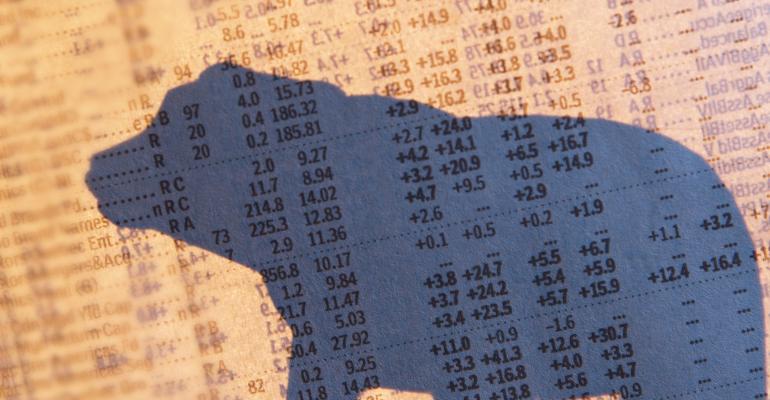By V. Ramakrishnan
(Bloomberg) --Bill Gross’s threshold for calling the end of the three-decade Treasury bull market keeps slipping out of reach.
The U.S. 10-year yield climbed to a two-year high of 2.60 percent in December, as assets around the world were buoyed by the reflation expectations sweeping markets in the wake of Donald Trump’s election victory. Gross said last month that breaking that technical level on a weekly or on a monthly basis would signal a bear market for bonds. Since then, the benchmark has retraced to 2.42 percent.
Optimism that an aggressive fiscal stimulus will drive economic gains is diminishing, if the pricing of rates options, Treasury forwards and inflation markets -- as well as investor positioning -- are anything to go by. These gauges also cast doubt on whether the Federal Reserve’s indication of three rate increases this year will materialize.
The median prediction in a Bloomberg survey of analysts is for the yield to remain at 2.56 percent in the second quarter of 2017, below Gross’s threshold, before creeping over it by the end of the third quarter.
1. Payer Skew Fades
The skew on swaptions shows the cost of buying protection against a rise in yields has dropped, erasing two-thirds of the increase it registered after Trump’s election. The mixed picture from Friday’s non-farm payrolls data (which showed average-hourly earnings grew at the weakest pace since August) has helped pressure 10-year yields lower.

2. Terminal Rate Declines
This proxy for what the peak Fed Funds rate will be in the current cycle has dropped. The one-month Treasury rate, two years forward, is now at 1.97 percent, implying fewer than six 25 basis-point increases over the next two years. It had touched 2.30 percent the day before the central bank raised rates last year. While the Fed’s dot plot forecasts three rate increases this year, in 2016 the Fed raised the rate just once after having signaled four hikes.

3. Treasury-Futures Positioning
Short positions in U.S. Treasury futures remain sizable. Non-commercial net futures positioning on 10-year bonds is hovering near an all-time high, the U.S. Commodity Futures Trading Commission’s data show. Any unwind of these bets could push yields down further.

4. Easing Inflation Expectations
A common measure of U.S. consumer-price expectations has erased most of the gains recorded after Trump’s win. The U.S. dollar’s five-year forward inflation swap rate, which looks five years ahead, is at 2.39 percent, just below the Fed’s long-run target rate of 2.40 percent. With structural factors such as low wage growth already impeding price gains, and the Fed expected to tighten policy, inflation expectations may be hard pressed to move higher when they’re already hugging the long-run target rate.

--With assistance from Tanvir Sandhu, Jeremy Herron and Dave Liedtka. To contact the reporter on this story: V. Ramakrishnan in London at [email protected] To contact the editors responsible for this story: Samuel Potter at [email protected] Isobel Finkel, Robert Brand





